[English] 日本語
 Yorodumi
Yorodumi- PDB-5jco: Structure and dynamics of single-isoform recombinant neuronal hum... -
+ Open data
Open data
- Basic information
Basic information
| Entry | Database: PDB / ID: 5jco | ||||||||||||
|---|---|---|---|---|---|---|---|---|---|---|---|---|---|
| Title | Structure and dynamics of single-isoform recombinant neuronal human tubulin | ||||||||||||
 Components Components |
| ||||||||||||
 Keywords Keywords | STRUCTURAL PROTEIN / microtubules / tubulin / single isoform / recombinant / dynamic instability | ||||||||||||
| Function / homology |  Function and homology information Function and homology informationnetrin receptor binding / dorsal root ganglion development / Post-chaperonin tubulin folding pathway / axonemal microtubule / Cilium Assembly / cytoskeleton-dependent intracellular transport / organelle transport along microtubule / Microtubule-dependent trafficking of connexons from Golgi to the plasma membrane / Carboxyterminal post-translational modifications of tubulin / forebrain morphogenesis ...netrin receptor binding / dorsal root ganglion development / Post-chaperonin tubulin folding pathway / axonemal microtubule / Cilium Assembly / cytoskeleton-dependent intracellular transport / organelle transport along microtubule / Microtubule-dependent trafficking of connexons from Golgi to the plasma membrane / Carboxyterminal post-translational modifications of tubulin / forebrain morphogenesis / Intraflagellar transport / Sealing of the nuclear envelope (NE) by ESCRT-III / cerebellar cortex morphogenesis / glial cell differentiation / dentate gyrus development / Formation of tubulin folding intermediates by CCT/TriC / neuron projection arborization / flagellated sperm motility / Gap junction assembly / Prefoldin mediated transfer of substrate to CCT/TriC / Kinesins / COPI-independent Golgi-to-ER retrograde traffic / Assembly and cell surface presentation of NMDA receptors / response to L-glutamate / pyramidal neuron differentiation / centrosome cycle / COPI-dependent Golgi-to-ER retrograde traffic / smoothened signaling pathway / regulation of synapse organization / startle response / motor behavior / response to tumor necrosis factor / Recycling pathway of L1 / microtubule polymerization / locomotory exploration behavior / sperm flagellum / response to mechanical stimulus / RHO GTPases activate IQGAPs / microtubule-based process / Hedgehog 'off' state / intercellular bridge / Activation of AMPK downstream of NMDARs / COPI-mediated anterograde transport / condensed chromosome / Mitotic Prometaphase / EML4 and NUDC in mitotic spindle formation / Loss of Nlp from mitotic centrosomes / Loss of proteins required for interphase microtubule organization from the centrosome / peptide binding / Recruitment of mitotic centrosome proteins and complexes / MHC class II antigen presentation / homeostasis of number of cells within a tissue / Recruitment of NuMA to mitotic centrosomes / Anchoring of the basal body to the plasma membrane / cellular response to calcium ion / axon guidance / HSP90 chaperone cycle for steroid hormone receptors (SHR) in the presence of ligand / Resolution of Sister Chromatid Cohesion / AURKA Activation by TPX2 / adult locomotory behavior / cell periphery / Translocation of SLC2A4 (GLUT4) to the plasma membrane / filopodium / neuromuscular junction / intracellular protein transport / RHO GTPases Activate Formins / synapse organization / recycling endosome / PKR-mediated signaling / cerebral cortex development / visual learning / structural constituent of cytoskeleton / microtubule cytoskeleton organization / memory / cytoplasmic ribonucleoprotein granule / neuron migration / HCMV Early Events / Aggrephagy / The role of GTSE1 in G2/M progression after G2 checkpoint / mitotic spindle / Separation of Sister Chromatids / Regulation of PLK1 Activity at G2/M Transition / mitotic cell cycle / lamellipodium / microtubule cytoskeleton / growth cone / neuron apoptotic process / Hydrolases; Acting on acid anhydrides; Acting on GTP to facilitate cellular and subcellular movement / gene expression / microtubule / hydrolase activity / cilium / protein heterodimerization activity / axon / cell division / neuronal cell body / GTPase activity / dendrite / GTP binding / protein-containing complex binding Similarity search - Function | ||||||||||||
| Biological species |  Homo sapiens (human) Homo sapiens (human) | ||||||||||||
| Method | ELECTRON MICROSCOPY / helical reconstruction / cryo EM / Resolution: 4 Å | ||||||||||||
 Authors Authors | Vemu, A. / Atherton, J. / Spector, J.O. / Szyk, A. / Moores, C.A. / Roll-Mecak, A. | ||||||||||||
| Funding support |  United Kingdom, United Kingdom,  United States, 3items United States, 3items
| ||||||||||||
 Citation Citation |  Journal: J Biol Chem / Year: 2016 Journal: J Biol Chem / Year: 2016Title: Structure and Dynamics of Single-isoform Recombinant Neuronal Human Tubulin. Authors: Annapurna Vemu / Joseph Atherton / Jeffrey O Spector / Agnieszka Szyk / Carolyn A Moores / Antonina Roll-Mecak /   Abstract: Microtubules are polymers that cycle stochastically between polymerization and depolymerization, i.e. they exhibit "dynamic instability." This behavior is crucial for cell division, motility, and ...Microtubules are polymers that cycle stochastically between polymerization and depolymerization, i.e. they exhibit "dynamic instability." This behavior is crucial for cell division, motility, and differentiation. Although studies in the last decade have made fundamental breakthroughs in our understanding of how cellular effectors modulate microtubule dynamics, analysis of the relationship between tubulin sequence, structure, and dynamics has been held back by a lack of dynamics measurements with and structural characterization of homogeneous isotypically pure engineered tubulin. Here, we report for the first time the cryo-EM structure and in vitro dynamics parameters of recombinant isotypically pure human tubulin. α1A/βIII is a purely neuronal tubulin isoform. The 4.2-Å structure of post-translationally unmodified human α1A/βIII microtubules shows overall similarity to that of heterogeneous brain microtubules, but it is distinguished by subtle differences at polymerization interfaces, which are hot spots for sequence divergence between tubulin isoforms. In vitro dynamics assays show that, like mosaic brain microtubules, recombinant homogeneous microtubules undergo dynamic instability, but they polymerize slower and have fewer catastrophes. Interestingly, we find that epitaxial growth of α1A/βIII microtubules from heterogeneous brain seeds is inefficient but can be fully rescued by incorporating as little as 5% of brain tubulin into the homogeneous α1A/βIII lattice. Our study establishes a system to examine the structure and dynamics of mammalian microtubules with well defined tubulin species and is a first and necessary step toward uncovering how tubulin genetic and chemical diversity is exploited to modulate intrinsic microtubule dynamics. | ||||||||||||
| History |
|
- Structure visualization
Structure visualization
| Movie |
 Movie viewer Movie viewer |
|---|---|
| Structure viewer | Molecule:  Molmil Molmil Jmol/JSmol Jmol/JSmol |
- Downloads & links
Downloads & links
- Download
Download
| PDBx/mmCIF format |  5jco.cif.gz 5jco.cif.gz | 994.7 KB | Display |  PDBx/mmCIF format PDBx/mmCIF format |
|---|---|---|---|---|
| PDB format |  pdb5jco.ent.gz pdb5jco.ent.gz | 818.2 KB | Display |  PDB format PDB format |
| PDBx/mmJSON format |  5jco.json.gz 5jco.json.gz | Tree view |  PDBx/mmJSON format PDBx/mmJSON format | |
| Others |  Other downloads Other downloads |
-Validation report
| Summary document |  5jco_validation.pdf.gz 5jco_validation.pdf.gz | 1.6 MB | Display |  wwPDB validaton report wwPDB validaton report |
|---|---|---|---|---|
| Full document |  5jco_full_validation.pdf.gz 5jco_full_validation.pdf.gz | 1.6 MB | Display | |
| Data in XML |  5jco_validation.xml.gz 5jco_validation.xml.gz | 133.8 KB | Display | |
| Data in CIF |  5jco_validation.cif.gz 5jco_validation.cif.gz | 199.3 KB | Display | |
| Arichive directory |  https://data.pdbj.org/pub/pdb/validation_reports/jc/5jco https://data.pdbj.org/pub/pdb/validation_reports/jc/5jco ftp://data.pdbj.org/pub/pdb/validation_reports/jc/5jco ftp://data.pdbj.org/pub/pdb/validation_reports/jc/5jco | HTTPS FTP |
-Related structure data
| Related structure data |  8150MC M: map data used to model this data C: citing same article ( |
|---|---|
| Similar structure data | |
| EM raw data |  EMPIAR-10071 (Title: Structure and Dynamics of Single-isoform Recombinant Neuronal Human Tubulin EMPIAR-10071 (Title: Structure and Dynamics of Single-isoform Recombinant Neuronal Human TubulinData size: 487.7 Data #1: Unaligned frame stacks of GMPCPP-bound alpha1a beta3 recombinant tubulin microtubules [micrographs - multiframe]) |
- Links
Links
- Assembly
Assembly
| Deposited unit | 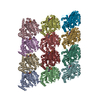
| |||||||||||||||||||||||||||||||||||||||||||||||||||||||||||||||||||||||||||||||||||||||||||||||||||||||||||||||||||||||||||||||||||||||||||||||||||||||||||||||||||||||||||||||||||||||||||||||||||||||||||||||||||||||||||||||||||||||||||||||||||||||||||||||||||||||||||||||||||||||||||||||||||||||||||||||||||||||||||||||||||||||||||||||||||||
|---|---|---|---|---|---|---|---|---|---|---|---|---|---|---|---|---|---|---|---|---|---|---|---|---|---|---|---|---|---|---|---|---|---|---|---|---|---|---|---|---|---|---|---|---|---|---|---|---|---|---|---|---|---|---|---|---|---|---|---|---|---|---|---|---|---|---|---|---|---|---|---|---|---|---|---|---|---|---|---|---|---|---|---|---|---|---|---|---|---|---|---|---|---|---|---|---|---|---|---|---|---|---|---|---|---|---|---|---|---|---|---|---|---|---|---|---|---|---|---|---|---|---|---|---|---|---|---|---|---|---|---|---|---|---|---|---|---|---|---|---|---|---|---|---|---|---|---|---|---|---|---|---|---|---|---|---|---|---|---|---|---|---|---|---|---|---|---|---|---|---|---|---|---|---|---|---|---|---|---|---|---|---|---|---|---|---|---|---|---|---|---|---|---|---|---|---|---|---|---|---|---|---|---|---|---|---|---|---|---|---|---|---|---|---|---|---|---|---|---|---|---|---|---|---|---|---|---|---|---|---|---|---|---|---|---|---|---|---|---|---|---|---|---|---|---|---|---|---|---|---|---|---|---|---|---|---|---|---|---|---|---|---|---|---|---|---|---|---|---|---|---|---|---|---|---|---|---|---|---|---|---|---|---|---|---|---|---|---|---|---|---|---|---|---|---|---|---|---|---|---|---|---|---|---|---|---|---|---|---|---|---|---|---|---|---|---|---|---|---|---|---|---|---|---|---|---|---|---|---|---|---|---|---|---|---|---|---|---|---|---|---|---|
| 1 |
| |||||||||||||||||||||||||||||||||||||||||||||||||||||||||||||||||||||||||||||||||||||||||||||||||||||||||||||||||||||||||||||||||||||||||||||||||||||||||||||||||||||||||||||||||||||||||||||||||||||||||||||||||||||||||||||||||||||||||||||||||||||||||||||||||||||||||||||||||||||||||||||||||||||||||||||||||||||||||||||||||||||||||||||||||||||
| Noncrystallographic symmetry (NCS) | NCS domain:
NCS domain segments: Component-ID: _ / Beg auth comp-ID: MET / Beg label comp-ID: MET / Refine code: _
|
 Movie
Movie Controller
Controller


 UCSF Chimera
UCSF Chimera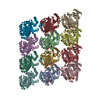
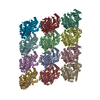



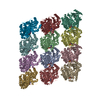
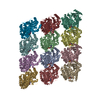


 PDBj
PDBj
























